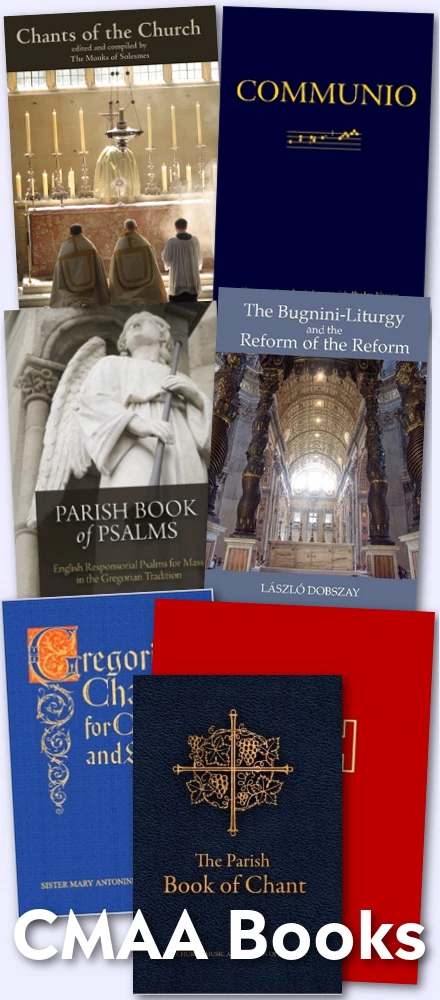A piece of correspondence came into NLM that raises a topic on which there has been something of a conspiracy of silence. We all know the problem is there, but it is rarely named:
The church choir to which I belong has shown zero growth in the 1.5 years I've belonged; indeed it has regressed. More than half of the choir admits to - almost prides itself on - being unable to read music. This despite years in choirs. We sing out of "Gather" and "Word and Song" which means we rarely sing anything pre-1980. Every four to six weeks we get a rousing Negro spiritual in there. I guess that's our "old" stuff. In the course of my 18 months we did make a few attempts. "How Lovely Is Thy Dwelling Place", "For Unto Us A Child Is Born", and "O Magister Mysterium". All dropped. All too hard. But John Angotti's visit was worth extra rehearsals to let us have a concert. And have him entertain at all of the Masses. Oops. I mean "lead us in prayerful liturgy."
Let's leave aside questions about the repertoire listed above. What we have here is one result of the dumbing down of music in liturgy: vast ignorance about how to read, make, and appreciate music, not just good music but music in general. The same problem afflicts the protestants too, of course, for it only takes one or two generations raised with "praise music" before there's hardly anyone left who knows anything about how to read notes, match pitch, much less render authentic sacred music. Most evangelical sects sing from words printed on screens and know nothing of hymnals.
This is a disgrace. But the Catholics have it even worse, since music in our micro-culture has always been thought of as a specialization, not an activity for the whole of the faithful (despite valiant attempts to change that). Our hymnals today print only the melody. We used to have childrens' choirs (if the old movies are telling the truth) but if there is nothing to which they are supposed to aspire to sing, what's the point? Why not gather the kids together once a year and have them belt out "The Little Drummer Boy" on Christmas Eve?
The resulting ignorance should not be a surprise. If two or three generations of readers were given only picture books, would anyone be surprised when there is a decline in literacy? But such is the case with Catholic music today.
I'm not advocating despair here but we do need to deal with the reality, and something tells me it is worse than we think. What are we to do?
I offer three solutions.
First, we must insist that anyone who sings or plays at liturgy be competent. That means that we must be willing to exclude people from the role of musician if they are not up to the job. Uncharitable? I don't think so. We wouldn't permit someone who is prone to tripping and falling to bring forward the gifts at offertory. We wouldn't permit an illiterate to read the scriptures. Why do we think that everyone has a right to sing with a microphone just because they claim it is their ministry? No, we must become more fussy. There is a way for everyone to serve the faith but not always in the way that he or she thinks is best. Directors must exclude. Pastors must support their decisions. If that means that there are two or three singers, so be it. High standards are the first order of business.
Second: we must recruit non-professional singers from outside the parish and outside Catholic ranks. With high standards, this is possible. Most towns have many singers who would love a chance to sing Palestrina or chant or Byrd, to involve themselves in the production of high art. They will make the sacrifice because it is so incredibly fulfilling. If the standards are high and kept there—and sometimes we must be very strict about this point—the volunteers will stay. Yes, the ideal would be to have everyone who sings be Catholic, but that is not the world in which we live.
Third, we must build for the long term by forming children's choirs, no parish excepted. The children must be taught to match pitch, to navigate scales, to sing solfege, to understand rhythm and to read both neumes and modern notation. If every parish had a children's choir, ideally rooted in the Ward Method, we could restore musical literacy in a decade and a half, exceeding what it had been in the past. The children will then be instilled with a passion for great art and a love for involving themselves in the liturgical life of the parish.
This can be done! But the first step is to admit the problem.




















